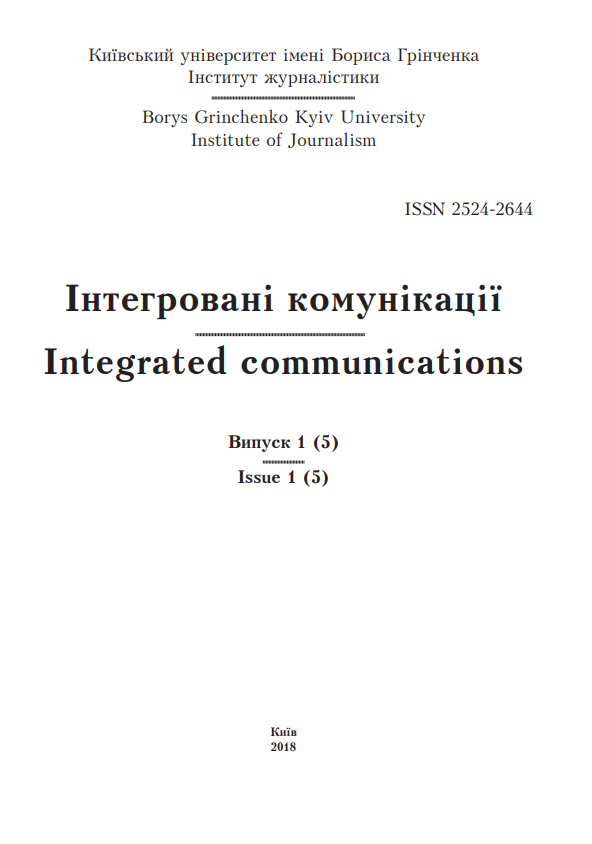Media centers in the world and ukrainian realies
Abstract
Media centers are technologically advanced modern libraries with well-organized space for individual and mass work of users using traditional and digital media. Media centers appeared at the turn of ХХ і ХХІ centuries in France and have gained considerable popularity in many countries around the world. They also exist in Ukraine. This article is devoted to analysis of activities of media centers in Ukraine and in the world. As media centers develop rapidly in the European space, that is the experience, which is worth to implement in Ukraine. And this is the urgency of the given research. The objective of the study is to investigate and to compare development and activities of media centers in Ukraine and abroad, defining their role in the modern information society. After all, the media centers are also an opportunity to improve the work of libraries in Ukraine, to attract more new users and to create an attractive and functional internal space of existing libraries. The following methods were used to solve the tasks of the study: simulation, comparison, analytical and sociocommunication methods, and also the method of typification and systematization. Nowadays three types of media centers are expanded and developed in Ukraine: 1) as an updated form of a public library; 2) as a new type of school library, a component of inclusive education; 3) as an information and resource center of a higher educational institution. The research also identifies the role of media centers in the modern information society and develops a project for creation of a media center for Boris Grinchenko Kyiv University providing for access to multifunctional space through innovative technologies for students and university employees. The project stipulates improvement of the library’s activities and modernization of its space in general.
Downloads
References
Blan-Monmeier, M. (2004), “Public Information Library (National Center of Culture and Arts named after J. Pompidou in Paris)”, Bibliotekovedenie [Library Science], no. 6, pp. 52–55.
Voskoboinikova-Huzieva, O. (2008), “Scientific library of the XXI century in the European socio-cultural dimension”, Bibliotechnyi Visnyk [Library Bulletin], no. 6, pp. 33–36.
Voskoboinikova-Huzieva, O. (2008), “Public information library of France: a model of modern information space”, Bibliotechna Planeta [Library Planet], no. 3, pp. 27–29.
Zhukova, V. P. (2013), “Media Center: termino-logical analysis”, Nauchnye i Tehnicheskie Biblioteki [Scientific and Technical Libraries], no. 9, pp. 5–10.
Ryzhova, N. A. (2010), “In the edge of champagne and coronations: travel notes of a Russian librarian in France”, Bybliotechnoje Delo [Library Business], no. 2, pp. 22–24.
Stoliarov, Yu. N. (2006), “What is a Media Center and how it fights with the school library”, Shkolnaja Biblioteka [School Library], no. 2, pp. 59–63.
Tsiapalo, L., Biluta, N. & Danylchenko, D. (2016), “The first Lviv Media Center as an innovative library space”, Bibliotechna Planeta [Library Planet], no. 1, pp. 21–22.
Yanush, O. (2015), “Media Center – a space for learning and exchange of thoughts”, Studvei [Studwave], available at: http: // studway.com.ua/mediateka/ (accessed: 19.04.2018).
State Standard of Ukraine (1994), Information and documentation. Basic concepts. Terms and definitions: DSTU 2392-94, Kyiv, 25 p.
Media Centre ICloud, available at: https:// support.apple.com/en-HT204264 (accessed: 19.04.2018).
Administration of the President of Ukraine (2018),“In Zaporizhzhia Maryna Poroshenko opened the First Media Center”, available at: http://www.president.gov. ua/news/u zaporizhzhi-marina-poroshenko-vidkrila-pershu-mediateku-39270 (accessed: 19.04.2018).




